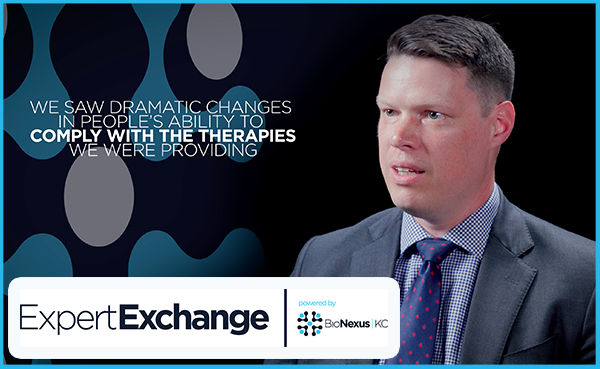
Technology is exiting a sort of adolescent phase. Many technologies have grown in impressive spurts and occasionally lose their way. Data analytics, IoT Devices, wearables, and web tracking applications are all perfect examples of tech with unique possibilities that got distracted by quick commercialization but still have vast unrealized potential. Christopher C. Cushing, PhD, Associate Professor at the Life Span Institute and The University of Kansas (KU), sees this full-grown potential for leveraging digital footprints to guide behavioral changes for teenage asthma patients.
Cushing’s work focuses on improving asthma treatment regimen adherence for teenage patients. “Teenagers are special in that they have underdeveloped self-regulatory abilities. They can benefit the most from additional support to ensure they can execute behaviors that lead to optimal health,” Cushing said.
He accomplishes better treatment adherence with the interaction of mobile sensors, a Smart Hub device, and a mobile app that can learn from the patient, provide personalized intervention, and improve consistency with their prescribed medication cycles. “We leave thousands of pieces of information behind as we navigate through our digitally connected days,” Cushing said. “We can use that digital footprint to understand better the person behind the patient and how we can help them meet their health goals.”
Cushing’s approach is high-tech but works because it is based on basic human psychology. “We know that being sufficiently motivated to perform a behavior is not enough to get the behavior performed. We all get disrupted by different life barriers,” Cushing said. His technology focuses on understanding the environmental barriers better and providing limited but practical digital support encouragement. “By better understanding the pattern of thinking and environmental constraints, we can intervene less frequently, but more precisely when our patients need the extra support.”
Cushing’s passion for this idea started in graduate school with the release of the iPhone. “I saw motivated, intelligent, and driven people struggle to change their behavior. We started to develop these small digital supports. Then, when it worked, we kept building the system into more sophisticated forms of technology. But even as it got more complicated, I remember it all started sitting one-on-one with people that genuinely wanted to do better,” Cushing said.
Regardless of how big the success of this digital health application is, the impact may still always hit at that one-on-one level. Cushing recalls a 14-year-old patient who provided fantastic feedback after one of the trial phases. “Initially, this patient explained that he often felt uncomfortable working with his medical team. However, as he interacted with the application and the sensory feedback, he had a little psychological distance from any perceived judgment. He felt like he was part of the team. This improved his health outcome and interaction with his doctors,” Cushing said.
Beyond the one-on-one impact, there is a growing interest in scaling partnerships to reach a broader market. “If we can truly understand some of these environmental truths about the digital footprint, then we have the potential to scale with industry partners who can reach a whole new level of consumer base,” Cushing said.
As these technologies develop into their fully grown and most impactful phase, researchers and innovators like Cushing will guide them toward that potential. The world will see what is possible when the technologies that have existed in early novelty can be developed to support the next generation’s health.